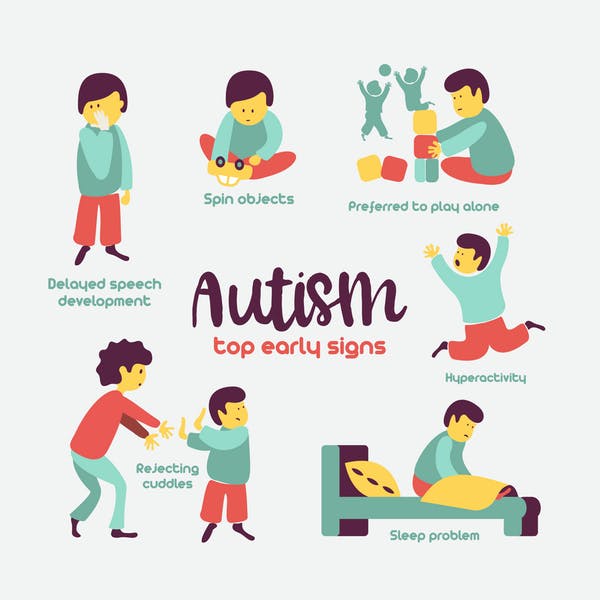The federal law providing for the education of children with disabilities includes two sets of requirements — for kids until they are age 3, and for children ages 3-21.
Consequently, children who received early intervention services often leave familiar surroundings when they transition to a different educational system sometime after their 3rd birthday. Understanding your rights can help make the transition smooth.
Under the Individuals with Disabilities Education Act (IDEA), children up to age 3 receive early intervention services from social service and developmental agencies through contracts with their state or county governments. Early intervention programming is outlined in an Individualized Family Service Plan (IFSP). The services called for through this plan are often delivered within the student’s home.
Starting at age 3, the focus changes away from the family and the home and toward preparing the child for entering the school community in a few years as a kindergartner. Special education services are delivered through an Individualized Educational Program (IEP) with programming primarily taking place in a school setting.
In Pennsylvania, educational responsibilities transfer during the year in which the child turns 3 to educational agencies called intermediate units, organized by county. At about age 5, responsibility for programs changes again, from the intermediate unit to the local school district.
Pennsylvania
The Age 3 Transition: Early intervention services do not terminate at a child’s 3rd birthday. Rather, programming continues until the end of the school year in which the child turns 3. Then the intermediate unit takes over responsibility.
In order to ease the age 3 transition, agencies responsible for early intervention and the intermediate units must meet prior to April 2 to identify all children who will turn three during the upcoming school year (July 1 through June 30).
Representatives of both agencies then meet between April 2 and June 1 to review each child’s program and to develop an educational plan that will take the child through June 30 of the transition year. Changes in programs or services during the transition year must be based on educational recommendations, not administrative or funding considerations. Pennsylvania’s policy is intended to allow the child “to start and finish the transition year in the same environment.”
The Age 5 Transition: Another transition takes place in Pennsylvania at the conclusion of the school year during which the child turns 5. Parents may choose,
entirely at their option, to defer transition for one year and to have their child remain in his previous program for that year.
By February 1, the intermediate unit must identify all children eligible for transition in September. It must meet with the parents and the child’s school district before the end of February. These meetings are intended to facilitate the registration process and to decide whether the child’s current IEP will continue or whether a new evaluation is necessary to revise it.
In Pennsylvania, if there is a disagreement about services to be provided to the child, the services continue until resolution to the dispute can be achieved, unless the parents and school district agree otherwise.
New Jersey
The Age 3 Transition: In New Jersey, the first transition point in special education occurs on the day that a child turns 3. Early intervention ceases and responsibility transfers to the local school district.
To prevent an interruption in education, parents should request several months prior to their child’s 3rd birthday that their local school district evaluate the child to determine eligibility for special education.
The expectation for very young children in early intervention is that their programs will run year-round. For school-age children, however, the expectation is that they will attend school from September through June and have the summers off.
School-age children who require services during the summer to maintain skills or to avoid regression are entitled to those services under the IDEA.
This is called “extended school year” (ESY). In New Jersey, the necessity of ESY services is decided by the IEP team, comprised of representatives from the school district and the child’s parents.
The Age Five Transition: The next transition takes place at the conclusion of the school year during which the child turns 5.
In New Jersey, parents can request that an additional year of preschool be provided, though their child does not have an automatic right to it. The decision is up to the IEP team.
A Child Study Team comprised of a school psychologist, a learning disabilities teacher, a school social worker and sometimes other professionals, meets to decide on the evaluations needed to determine whether special education eligibility and programming is necessary going forward.
Once the evaluations are complete, if the Child Study Team determines that special education is necessary, the child’s eligibility category changes from “Preschool Disabled” to one of 14 other categories of eligibility provided for in New Jersey.
If there is a disagreement about what services will be provided to the child, the parents must file for due process or mediation within 15 days in order to invoke “Stay Put.” Stay Put requires that current services must be maintained until all disputes are resolved, unless the parents and the school district agree otherwise.
If the parents do not formally seek due process or mediation, then the proposed changes or termination of services will automatically take effect 15 days after they are proposed.
Delaware
The Age 3 Transition: In Delaware, most children make a transition at about age 3, though the specifics depend on the child’s category of disability.
IDEA also requires that school-age children with disabilities be educated to the maximum extent appropriate alongside their non-disabled peers. This requirement, called the “least restrictive environment” (LRE), is often misunderstood to require school districts to always educate students with disabilities within their local public schools.
Rather, if a local public school does not have the services and programming necessary to provide appropriate placement for a particular student, then the school district must secure education in alternative placements, which can be outside the district. The expectation for very young children in early intervention is that their programs will run year-round. For school-age children, however, the expectation is that they will attend school from September through June and have the summers off.
School-age children who require services during the summer to maintain skills or to avoid regression are entitled to those services under the IDEA.
This is called “extended school year” (ESY). The necessity of ESY services is decided by the IEP team, comprised of representatives from the school district and the child’s parents.
The Age Five Transition: The next transition takes place at the conclusion of the school year during which the child turns 5 (or, in Delaware, depending on category of disability, sometimes 4) rather than on the child’s actual birthday.
By February 1 of each year, the sending agency must identify all children eligible for transition in September. It must meet with the parents and the child’s school district before the end of February.
These meetings are intended to facilitate the registration process and to decide whether the child’s current IEP will continue or whether a new evaluation is necessary to revise it.
Lori M. Gaines, Esq., is an attorney with Sussan and Greenwald, a Cranbury, NJ law firm comprised of attorneys with backgrounds in special education that limits its practice to representing children with special needs






